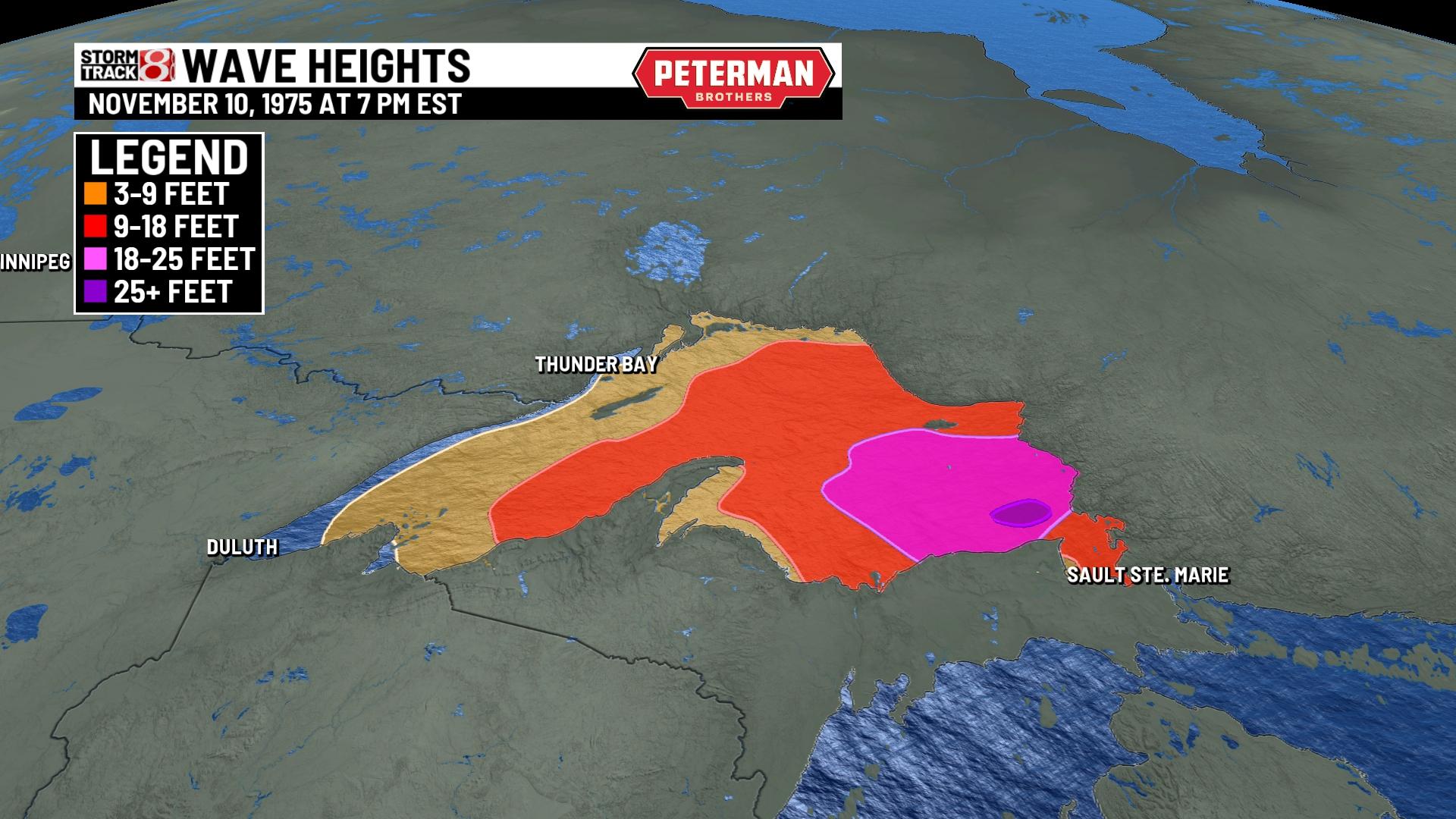When the gales of November came early
INDIANAPOLIS (WISH) – In the last couple of falls, the Great Lakes region has seen some highly windy days fly through.
With the upcoming strong winds that are set to roll in for Indiana’s Saturday, one may think back on past gusty days.
One event that always comes to my mind is the powerful Lake Superior system that led to the loss of the SS Edmund Fitzgerald in November 1975. This was a significant event for several reasons. This ship was the largest-ever deployed on North America’s Great Lakes, she remains the largest ship to have sunk there, and it led way to tightened regulations and practices regarding ship safety.
The Edmund Fitzgerald was an American Great Lakes freighter that launched June 7, 1958. She was a viable ship that was critical for delivering goods and had set seasonal haul records. The ship was 730 feet long and 75 feet wide. Due to the size and historic achievements of this ship, Edmund Fitzgerald became a favorite of boat watchers throughout her career.
After nearly two decades of tremendous success, Edmund Fitzgerald’s existence would unfortunately be cut short.
The Edmund Fitzgerald would embark on its ill-fated voyage at 2:15 p.m. EST Nov. 9, 1975 from Superior, Wisconsin. The ship’s destination was the steel mill on Zug Island near Detroit, Michigan. The freighter was under the command of Capt. Ernest M. McSorley. Edmund Fitzgerald would join a second frieghter, called Arther M. Anderson, that had a destination set for Gary, Indiana.
The National Weather Service indicated that a storm would pass just south of Lake Superior by 7 a.m. EST Nov. 10, 1975. However, by the morning of Nov. 10, 1975, the forecast was altered and placed Lake Superior under storm warnings due to wind gusts from 40-60 mph being expected.

Going into the afternoon hours, the Fitzgerald had eventually gotten miles ahead of the Anderson ship. Wind gusts were approaching 60 mph with increasing wave heights by 2 p.m. EST. Shortly after 3:30 p.m., McSorley reported to the Anderson that they were taking on water and lost two vent covers. At 4:39 p.m., McSorley contacted the U.S. Coast Guard in Grand Marals, Michigan, to ask if its monitoring equipment was active, and it was not. McSorley would announce not long afterward that they had lost both radars and were taking heavy seas over the deck.
The ferocity of the winds and waves would only get worse. By the late afternoon hours, sustained winds were over 58 mph. Wave heights from 25-35 feet were being recorded by 6 and 7 p.m. as well. At roughly 7:10 p.m., the Anderson asked how the Fitzgerald ship was holding up, and the response given was “we are holding our own.” Edmund Fitzgerald would never be heard from again. The ship would be overtaken by the rough seas and sank. All 29 crew members that were aboard tragically died.


It was not until Nov. 14, 1975, when the Edmund Fitzgerald was discovered split into two large sections on the lake floor.
The exact cause of the sinking of the Fitzgerald is still not known, although the extreme weather and rough seas played a major role in this event. Many books, studies and expeditions have scrutinized the details and tried to come up with theories of what was the final blow.
The Edmund Fitzgerald may have been swamped, suffered structural failure or topside damage, experienced shoaling, or suffered from a combination of these. Other possible contributing factors to the sinking is the altered forecasts, a negligence from McSorley with not pulling away from harsh weather, and a lack of viable weather instrumentation.
One notable thing about this event is that Canadian singer-songwriter Gordon Lightfoot would make a song called “The Wreck of the Edmund Fitzgerald” in 1976. It is regarded as one of his biggest songs.



